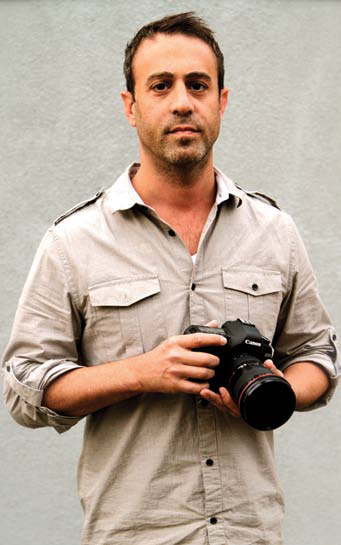Canon Cameras Are a Natural for Cinematic Storytelling

Matt Ogens
LOS ANGELES—It all comes down to telling great stories and although there are different types of them, the nature of the story itself may change how I capture it. To decide, I collaborate with a director of photography and ask what type of camera they think is best for each project from a creative perspective.
We discuss the look I want for the story and then the DP and I will choose the camera.
Whatever your choice, the camera must serve the story and not take away from it. You also want to use equipment that isn’t complicated. I don’t want to spend too much time dealing with technology; the technology should just work.
Although I can’t speak to the technical aspects of various cameras, I can say that for me, Canon cameras satisfy my requirements and they also produce the cinematic and filmic look I like.
WORKS WELL WITH AVAILABLE LIGHTING
As an example, we were asked to do a shoot in a manufacturing plant as part of a car ad campaign. Space was tight, so we needed a camera that wasn’t big and cumbersome. Also, we couldn’t bring in a lot of people or a big array of lighting equipment and we needed a camera that was flexible and would work well with the illumination already in the plant. The Canon EOS C300 was a perfect fit. I like the look it provides, and it’s great with low light and very flexible in different lighting conditions. I also like how its slow-motion works almost like a film camera in that it’s done in-camera; you don’t have to slow it down in post.
Another recent assignment had us working on a project involving a retired Baltimore police officer, shooting in some of the neighborhoods where he’d worked, as well as inside some police stations. It was essential to keep a low profile and the compact design of the Canon camera was great for that. The camera is also userfriendly, so you can get by with a much smaller crew.
Lens choice depends on the project; I’ve used Canon EF prime and zoom lenses, and pretty much every other kind of Canon lens and think they’re all great.
SMALL PROFILE DOESN’T DISTRACT
Aiming a camera at a person will always change their behavior in some way, but by using Canon’s EOS 5D Mark III and EOS 7D models, we can make them more comfortable than they would be facing a big camera and crew.
The small physical size of the EOS 5D Mark III and the EOS 7D cameras mean that they don’t draw attention, so they’re really great for keeping other people in the street from getting in the way when we’re doing location shots and street interviews.
I can also tell you that there were no post issues with our Canon cameras. It was a smooth process. My DP shot in Canon Log with the EOS C300 camera, so there was plenty of room to adjust the visuals in post. Canon seems like it’s really connecting with filmmakers in terms of its outreach.
Matt Ogens is an independent television and film director. He may be contacted atogensm@gmail.com.
For additional information, contact Canon at 800-652-2666 or visitcinemaeos.usa.canon.com.
Get the TV Tech Newsletter
The professional video industry's #1 source for news, trends and product and tech information. Sign up below.
